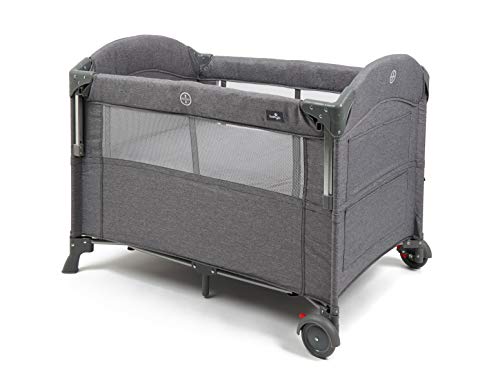The Ultimate Guide to Choosing a Bedside Bassinet: Safety, Comfort, and Convenience
Introduction
As new parents enter the exciting yet difficult world of childcare, one vital product that often tops the list is a bedside bassinet. These spaces act as a safe sleeping location for newborns while allowing parents to maintain close distance throughout the night. With a myriad of alternatives offered on the market today, comprehending the functions, advantages, and factors to consider for a bedside bassinet can make a considerable difference in the general parenting experience.
This short article will check out the different types of bedside bassinets, safety standards, essential functions to think about, and some often asked concerns to assist you make an informed choice.
What is a Bedside Bassinet?
A bedside bassinet is a sleeping space designed for newborns and infants, normally used for the first few months of a baby's life. It is generally smaller than a crib and offers the convenience of being placed next to an adult bed, making it possible for parents to tend to their babies quickly throughout nighttime.
Kinds Of Bedside Bassinets
There are several kinds of bedside bassinets readily available, each developed with special functions and advantages:
- Co-Sleeping Bassinets: These are created to attach securely to the side of the moms and dad's bed, permitting easy access during nighttime feedings and soothing without fully co-sleeping.
- Standalone Bassinets: These are free-standing versions that sit beside your bed however do not attach. While they use up more space, they can sometimes offer a larger sleeping area.
- Travel Bassinets: Lightweight and portable, these bassinets are developed for households on the go. They can be folded or taken apart quickly, providing benefit while traveling.
- Convertible Bassinets: Some designs can transform into cribs or playards, extending their life-span and making them a more economical option.
Advantages of Using a Bedside Bassinet
Selecting a bedside bassinet can give numerous advantages, consisting of:
- Convenience: Parents can quickly access their baby throughout the night for feeding, reassuring, or diaper modifications without getting out of bed.
- Security: Bassinets are created specifically for infants, often sticking to security standards that help minimize the danger of Sudden Infant Death Syndrome (SIDS).
- Convenience: Babies can feel secured with their parents close by, promoting a sense of security that is favorable to much better sleep.
- Space-saving: Bedside bassinets are normally compact and easy to suit smaller sized bedrooms.
Key Safety Features to Consider
When picking a bedside bassinet, guaranteeing safety is critical. Here are a few vital safety functions to consider:
- Stable Base: Ensure the bassinet has a strong structure that can not tip over quickly. Examine that wheels lock into place to prevent motion.
- Breathable Fabrics: Look for products that permit air blood circulation to decrease the danger of suffocation.
- Height Adjustability: A bassinette that gets used to the height of your bed can improve security and benefit.
- No Drop Sides: Select models that do not have drop sides, as they can present a risk of the baby falling out or getting trapped.
- Certification: Always ensure that the bassinet adheres to security standards set by acknowledged agencies like the American Academy of Pediatrics (AAP).
Extra Features to Look For
Aside from safety, here are some additional functions to think about when looking for the best bedside bassinet:
- Storage Space: Some bassinets include integrated storage for basics like diapers, wipes, and clothing.
- Rocking or Gliding Mechanism: This can assist relieve babies who have trouble calming down to sleep.
- Noise and Light Features: Some designs include soothing noises, nightlights, or forecasts that can assist soothe infants to sleep.
- Washable Components: Make sure removable covers and sheets are machine washable for easy cleansing.
Picking the right bedside bassinet is an important choice that can exceptionally influence the early parenting experience. By understanding the numerous types offered, their benefits, essential security features, and extra benefits, parents can make an informed choice to guarantee both their baby's comfort and security.
Ultimately, the best bedside bassinet must accommodate individual household needs while boosting the bond between parents and their newborns throughout those valuable very first couple of months.
FAQs about Bedside Bassinets
1. For how long can just click the up coming post use a bedside bassinet for my baby?
The majority of bassinets are designed for infants approximately about 4 to 6 months, or up until the baby can roll over, pull up, or exceed the weight limitation specified by the producer (usually around 20-30 pounds).
2. Are bedside bassinets safe for co-sleeping?
While bedside bassinets offer close proximity, it's essential to ensure they're safely connected to the bed. Constantly follow guidelines for safe sleeping to decrease the danger of SIDS.
3. Can I use a bedside bassinet for a premature baby?
Yes, lots of bedside bassinets can accommodate early infants. However, it's important to speak with a pediatrician for suggestions based upon your baby's particular needs.
4. What should I search for in regards to mattress safety in a bedside bassinet?
Make sure that the mattress fits tightly versus the sides of the bassinet without any spaces. The mattress must be firm and covered with a fitted sheet to decrease the danger of suffocation.
5. Exist any specific cleansing directions I should follow?
Most bassinets have detachable covers that can be cleaned. Always follow the maker's directions for cleansing and keeping the bassinet.
By attending to these concerns, parents can navigate the decision-making process relating to bedside bassinets better, making sure security and comfort as they invite their little one into the world.

